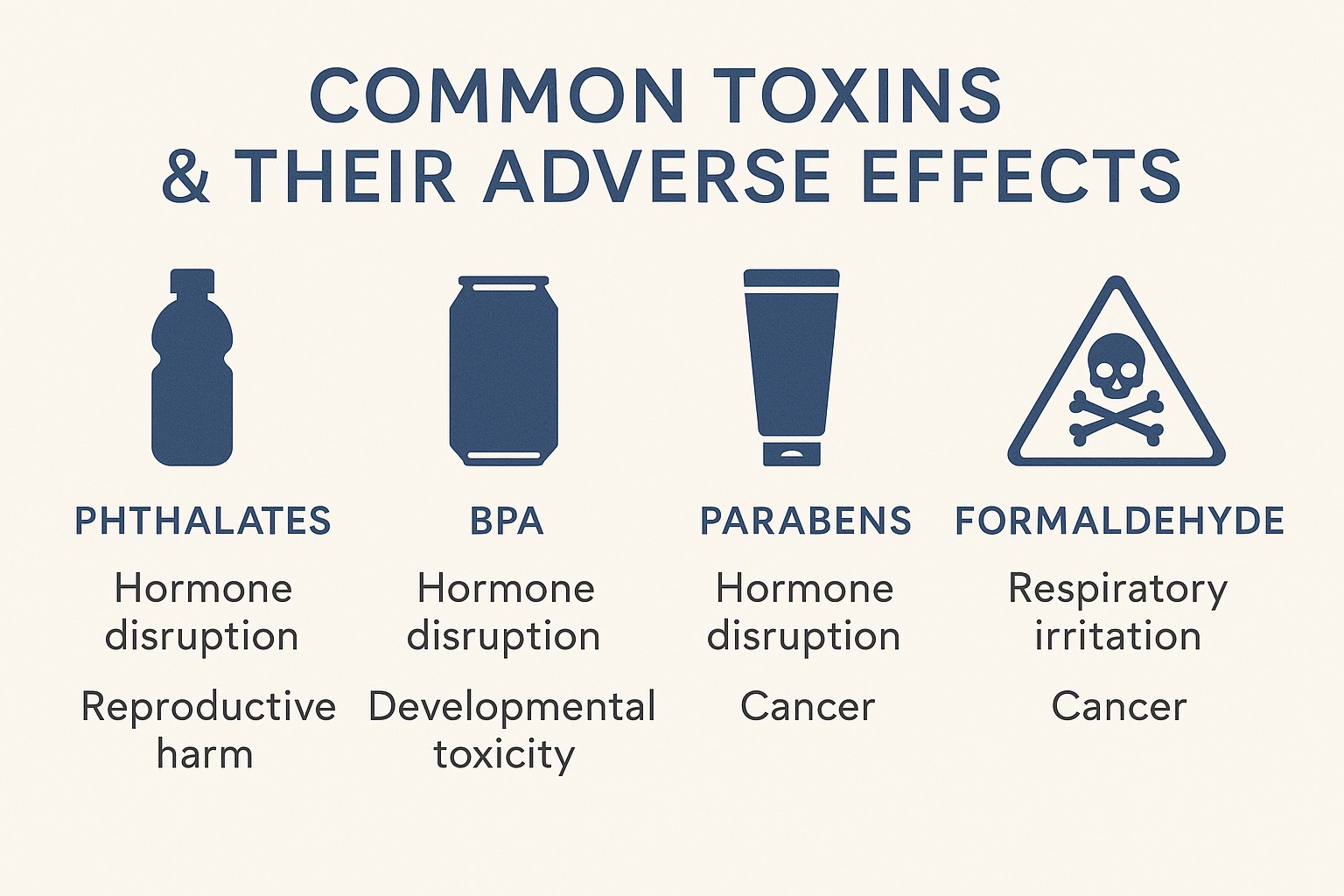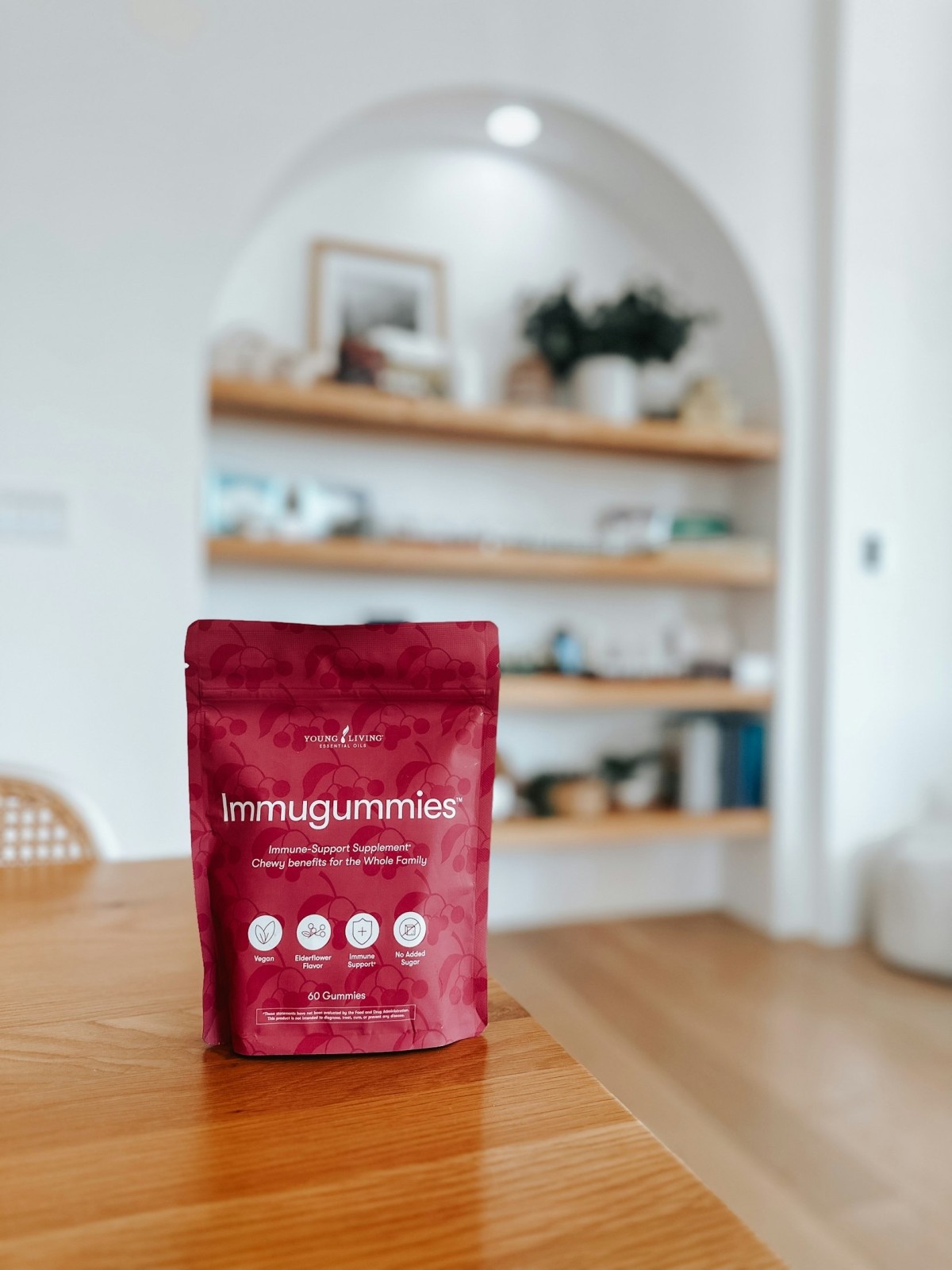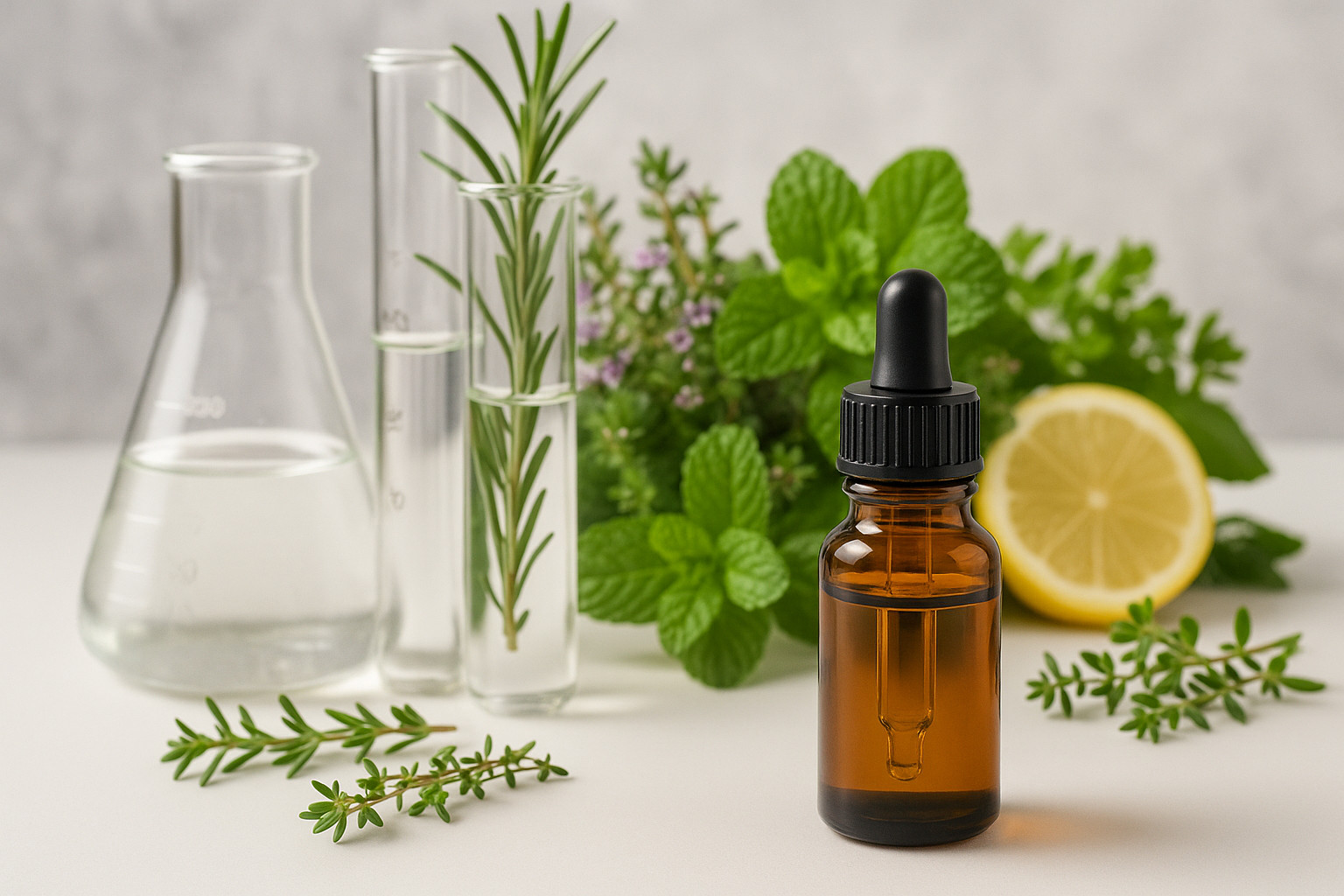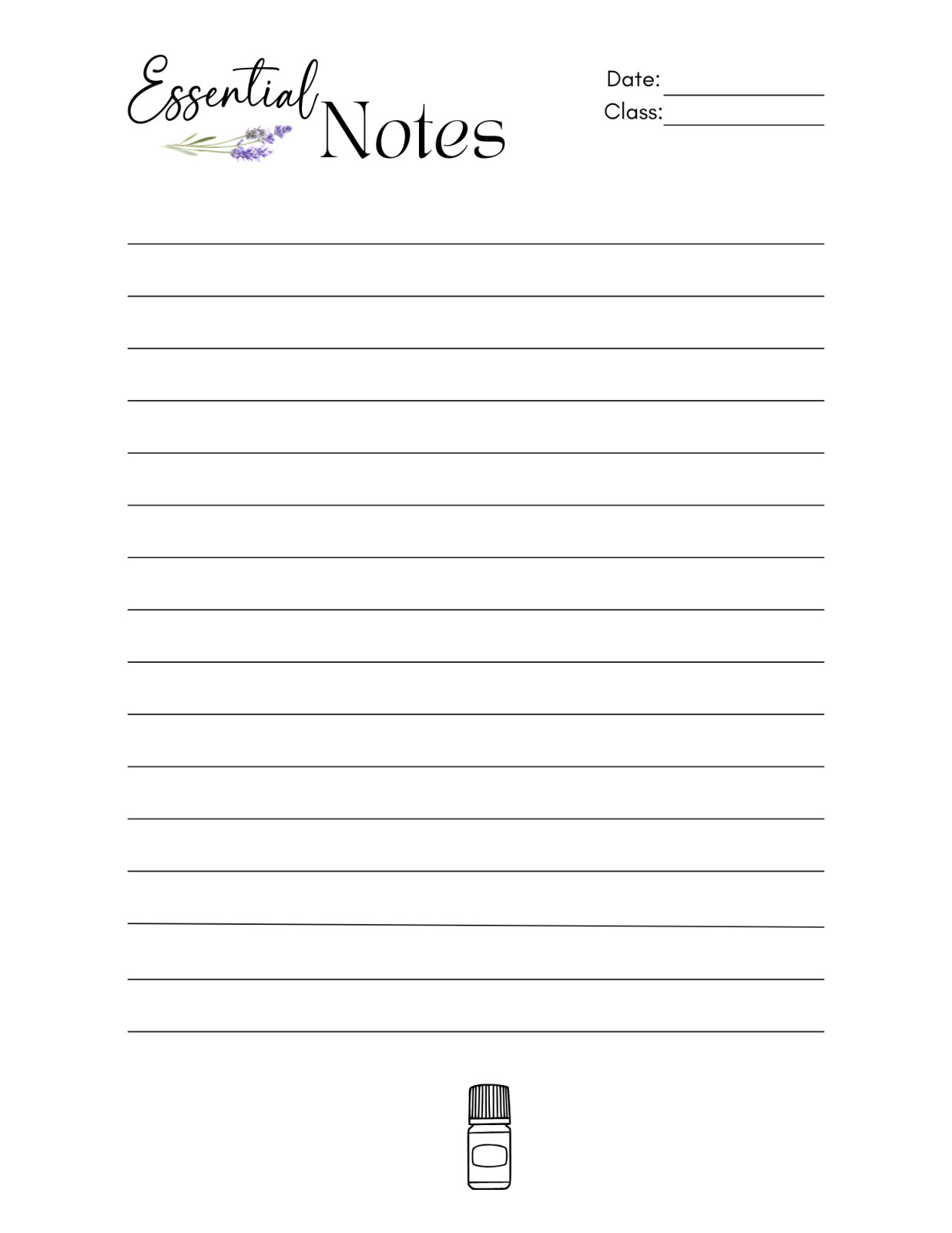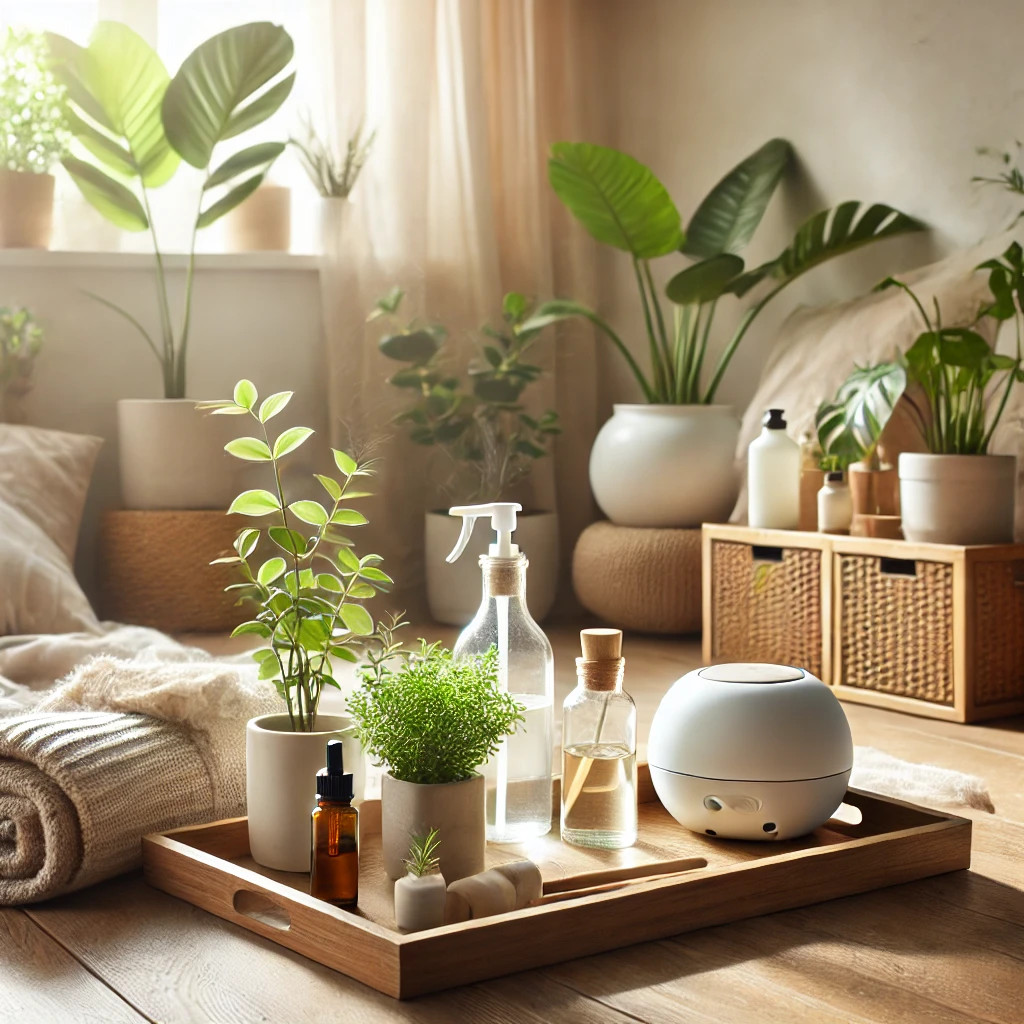February marks Heart Health Month, a perfect time to prioritize the wellness of our most vital organ. The article introduces natural methods to enhance heart health through lifestyle changes, essential oils, and heart-loving herbs. By focusing on prevention, we can integrate simple yet powerful tools like Lavender for stress relief, Hawthorn for heart strength, and Cypress for circulation into our daily routines to maintain a healthy heart.
Understanding that heart disease is the leading cause of death worldwide, the article emphasizes that many related issues are preventable through mindful lifestyle choices. Essential oils play a crucial role in supporting cardiovascular health by reducing stress, improving circulation, and balancing blood pressure. By incorporating these natural elements into our lives, along with healthy habits, we effectively nurture our hearts and promote overall well-being.
Five actionable lifestyle tips are outlined to support heart health naturally: using essential oils and breathwork to alleviate stress, engaging in daily physical activity for better circulation, consuming heart-healthy foods, ensuring restful sleep, and detoxing the home environment. Each of these steps provides practical ways to care for your heart proactively. As we adopt these holistic practices, we embrace true wellness, not merely avoiding disease but thriving naturally.
Read more...Let's make our homes extra cozy this season with these Fall diffuser blends! These fall-themed blends are perfect for Thanksgiving and the holiday season!
As we embrace the heartwarming feelings of the Holiday Season, it's a great time to remember to cultivate a spirit of gratitude and thankfulness that can fill our hearts and homes. The magic of November brings us closer to the joys of homemade pumpkin pie, the beauty of nature preparing to sleep for the witner, and the cherished moments of Thanksgiving dinner. It's a time that heralds the beginning of a season filled with wonder, a reminder to pause and appreciate the abundance that surrounds us.
This season, let's make our homes a sanctuary of warmth and welcome, starting with the enchanting aromas of Thanksgiving diffuser blends. These blends are not just for Thanksgiving Day but are a celebration of the entire holiday season, inviting us to savor every moment.
As we prepare for the festivities, pulling out Christmas lists and warming the oven for those delicious pies, let's enhance the ambiance with the scents of the season. I'm excited to share with you the most delightful essential oils to diffuse during this enchanting season, along with some heartwarming diffuser blends. They promise to make your home a haven of coziness and hospitality, setting the perfect backdrop for creating lasting memories this holiday season.
Let's welcome this beautiful time of year with open hearts and homes, infused with the spirit of thankfulness and the comforting essence of November's best diffuser blends.
Pumpkin Pie
- 3 drops cinnamon bark
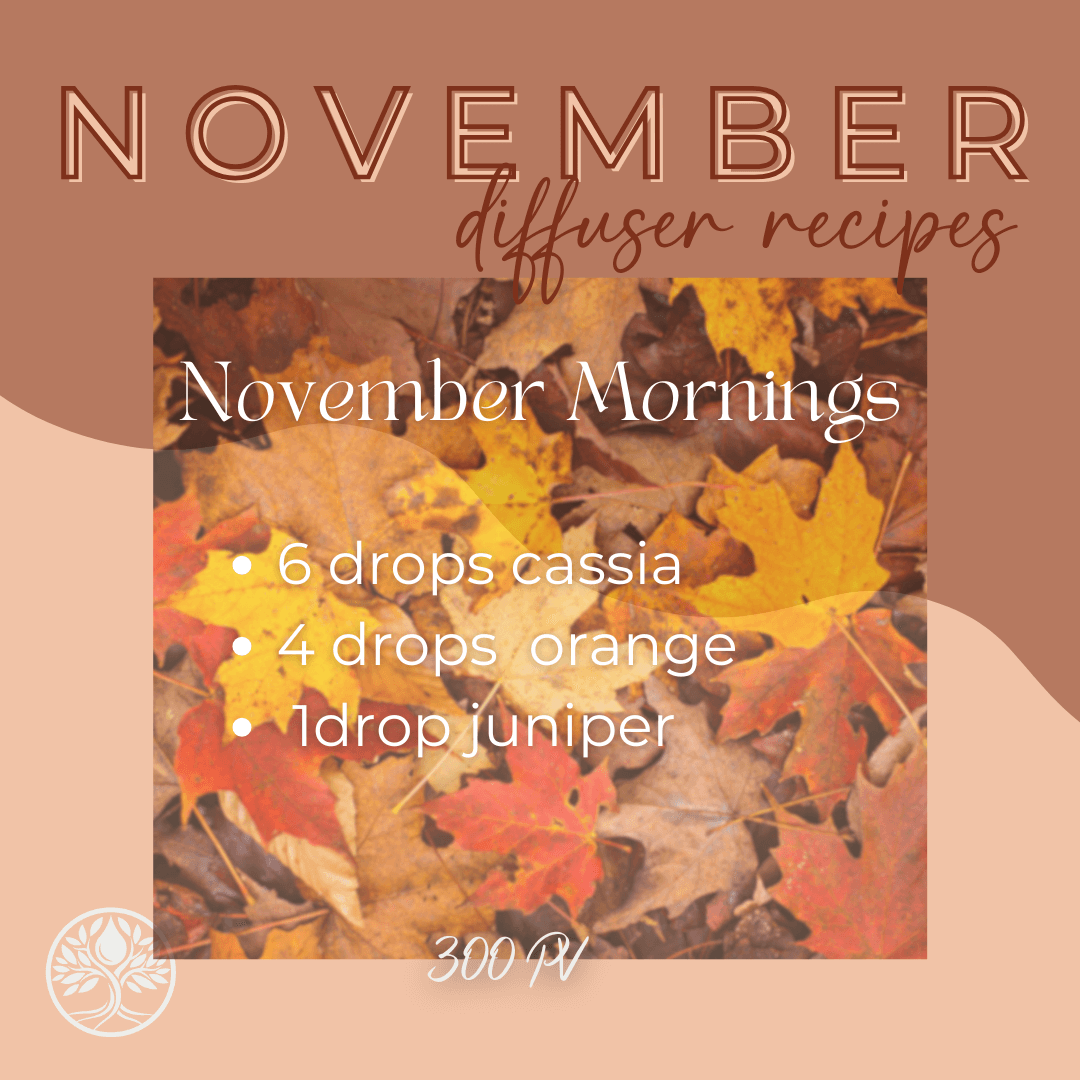
- 2 drops clove
- 1 drop cardamom
November Mornings
- 3 drops cassia
- 2 drops wild orange
- 1 drop juniper berry
Thanksgiving Day
- 3 drops coriander
- 2 drops ginger
- 1 drop clove
Spiced Apple Cider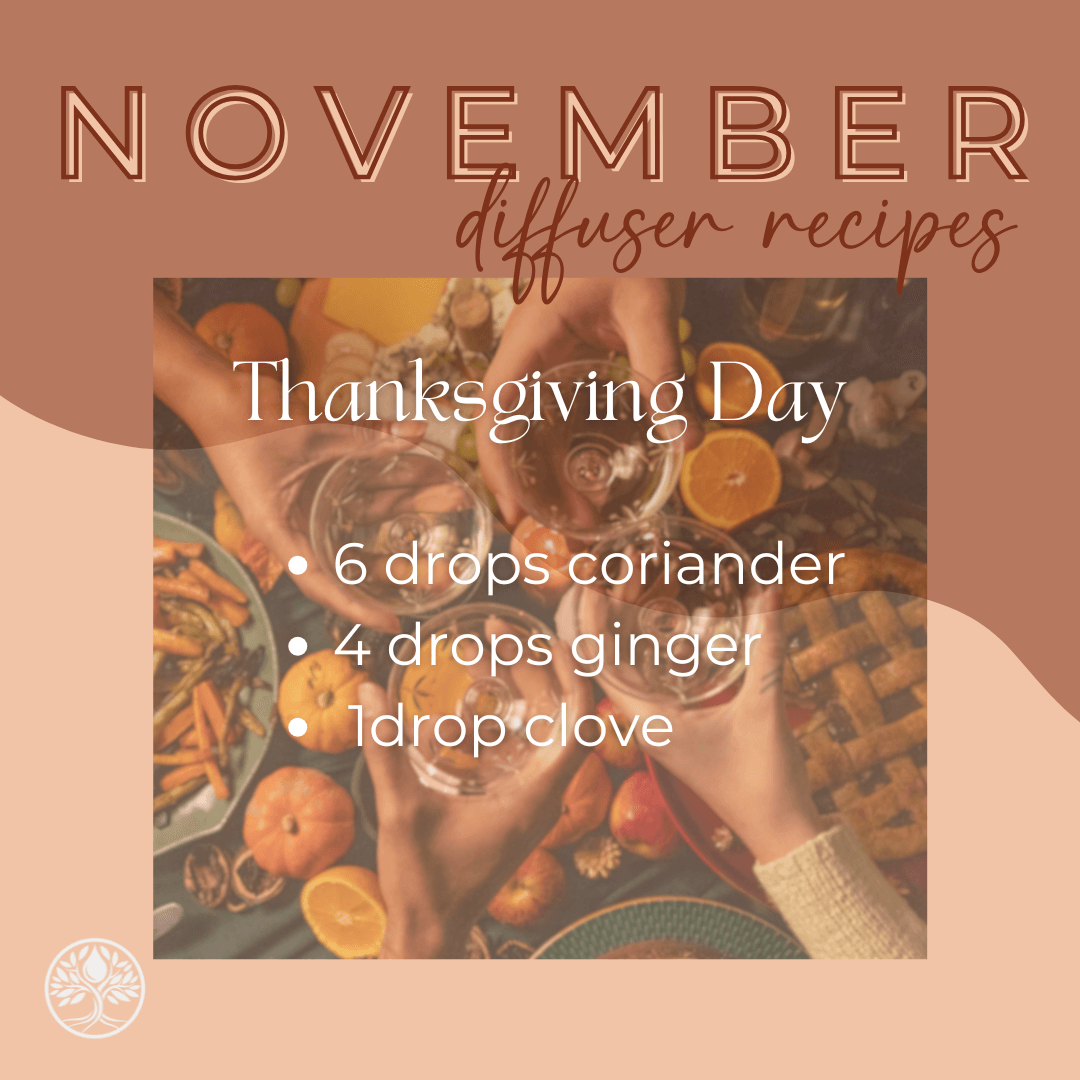
- 3 drops cinnamon bark
- 2 drops wild orange
- 1 drop clove
- 1 drop ginger
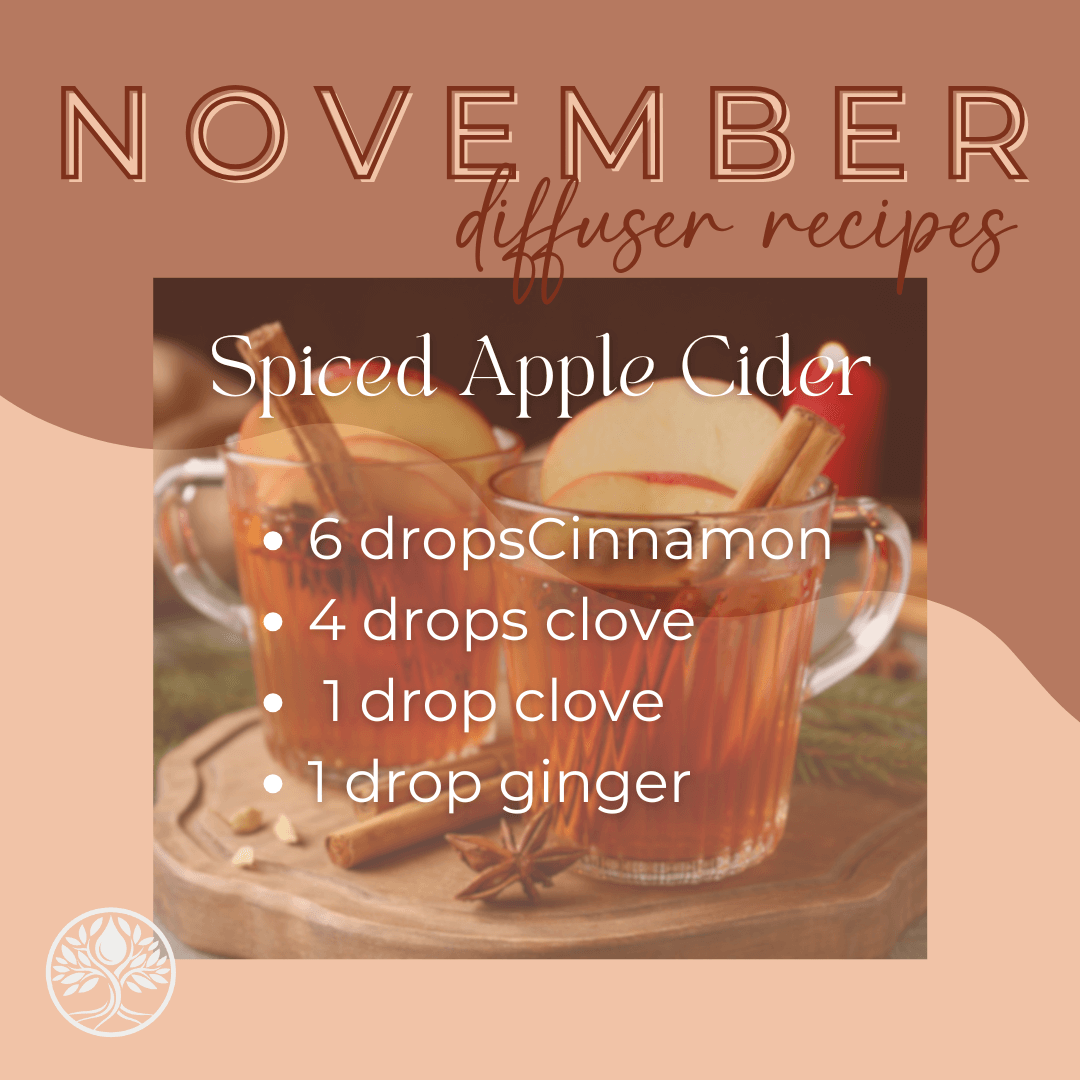
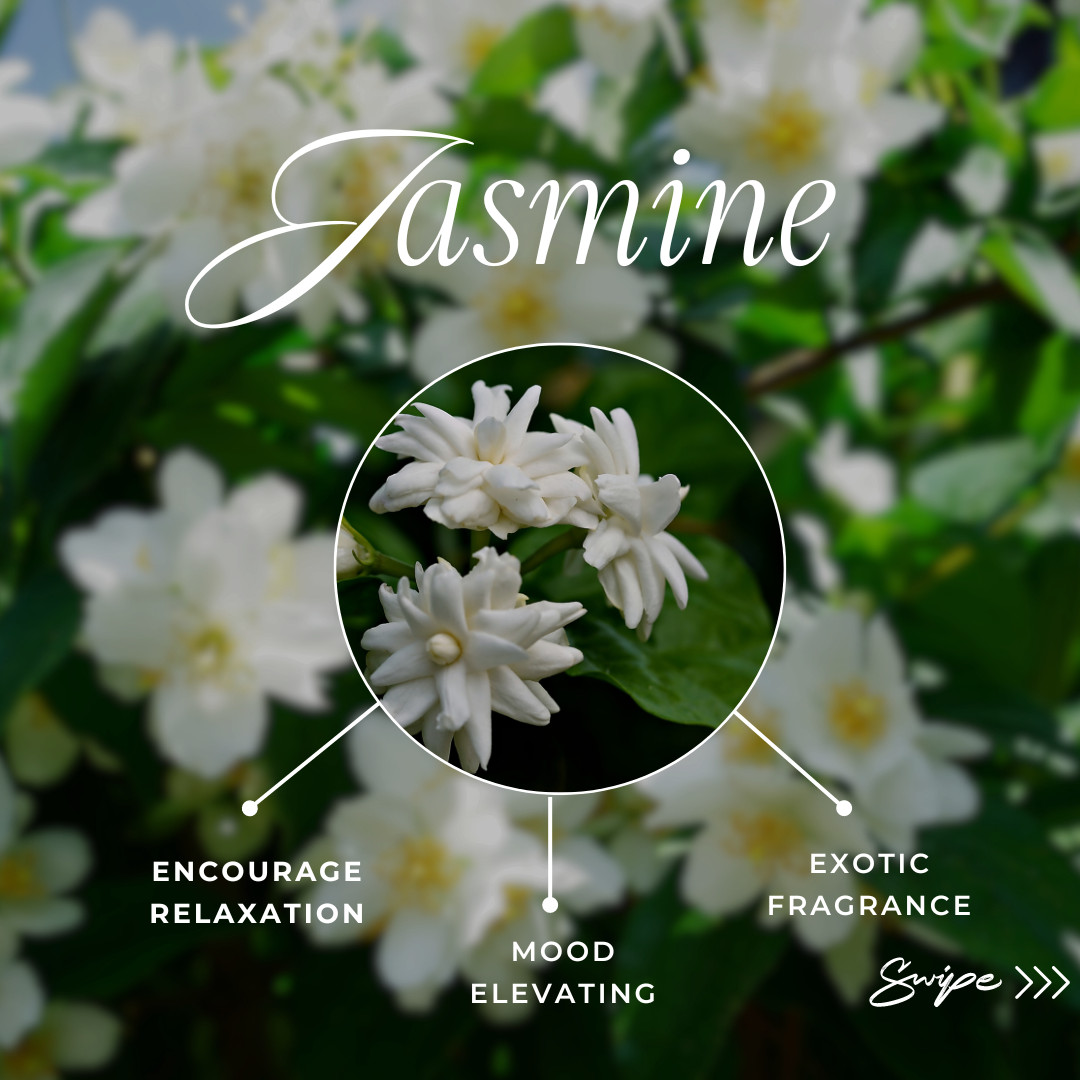
Jasmine: The Essence of Oneness and Spiritual Harmony
Jasmine oil serves as a bridge between the spiritual and the earthly, facilitating a deep connection between the non-physical and physical realms. It aids in receiving spiritual guidance and grounding it into our tangible existence.
Revered in India as the "queen of the night" and "moonlight of the grove," jasmine has been cherished by women for centuries not only for its exquisite fragrance but also for its symbolic representation of hope, happiness, and love across various spiritual and religious traditions.
As a high-frequency oil, jasmine elevates one's intuitive capabilities and wisdom. Its delicate nature invites angelic presence and supports the manifestation of one's heart's desires and intentions, effectively communicating them to the Universe. Inhaling jasmine is akin to merging heaven with earth, enhancing spiritual connections and actualizing one's soul purpose in the material world.
When you are drawn to this oil, it may signify a readiness to enhance inner harmony while helping you to be balanced across all facets of life. It encourages embracing sensitivity as a strength, heralding a new era of luminosity in communion with the Higher Self. Through the crown chakra's connection to the Source/God and All That Is, a new level of awareness is accessible, fostering openness to greater joy, harmony, peace, and abundance.
Jasmine's influence extends to fostering a sense of unity, amplifying inner glow, and enhancing inspiration, joy, optimism, and spiritual awareness. If feelings of agitation or disconnection from the Divine have been present, jasmine strengthens this sacred bond, promoting love and spiritual attunement. This state of spiritual maturity, characterized by an open crown enery, invites a profound unity with God and the universal energy.
Beginning the day with a drop of jasmine on the crown illuminates one's path with joy and happiness.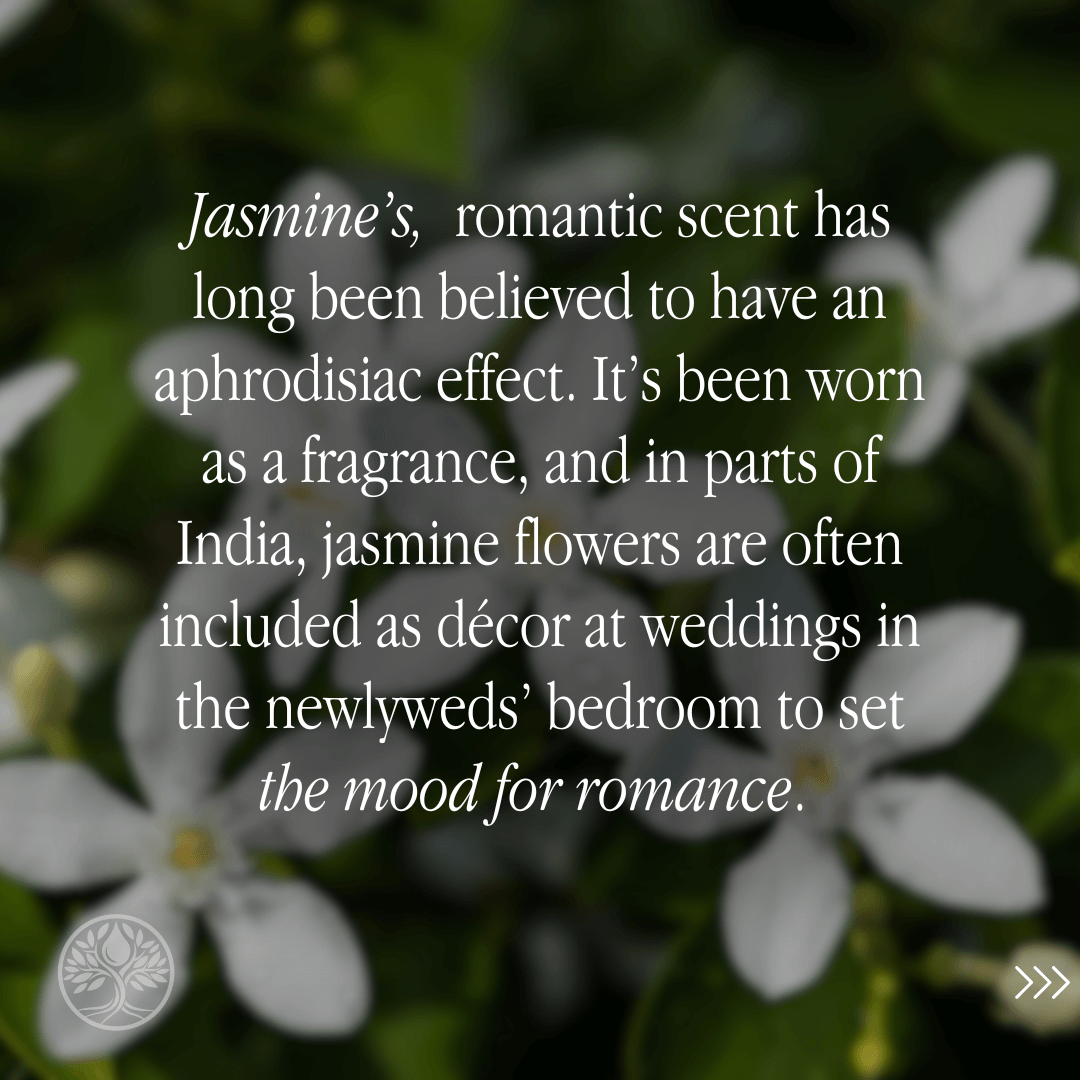

Some fun facts about Jasmine Essential Oil:
* It takes about 1,000 pounds of jasmine flowers (3.6 million fresh blossoms) to product one pound of pure jasmine essential oil.
* The blossoms must be collected before sunrise in order to obtain the highest quality of essential oil
* The flowers need to be hand picked, if the blossoms are crushed at all, the quality of the oil will be diminished
* A single pound of pure Jasmine oil may cost between $1,200 and $4,500 whereas synthetic jasmine essential oil (cheap oil) is only aobut $3.50 per pound.
* Jasmine is an absolute, which means that the plant material is extracted with natural hexane, and then the lighter aromatic compounds are extracted using a pure grain alcohol to produce the final product. Because of this, Jasmine should not be taken internally.
Affirmation to use when inhaling Jasmine: "I embrace and honor the divine spirit within me. As part of this relm, my spirit harmonizes with All That Is."
Reflection: Consider the depth of your trust in being supported, guided, and loved by a higher power. Reflect on your sense of unity with the universe and the sacredness of your daily practices connecting you to this higher power. What priority do you place on this spiritual connection, and how do you honor it?
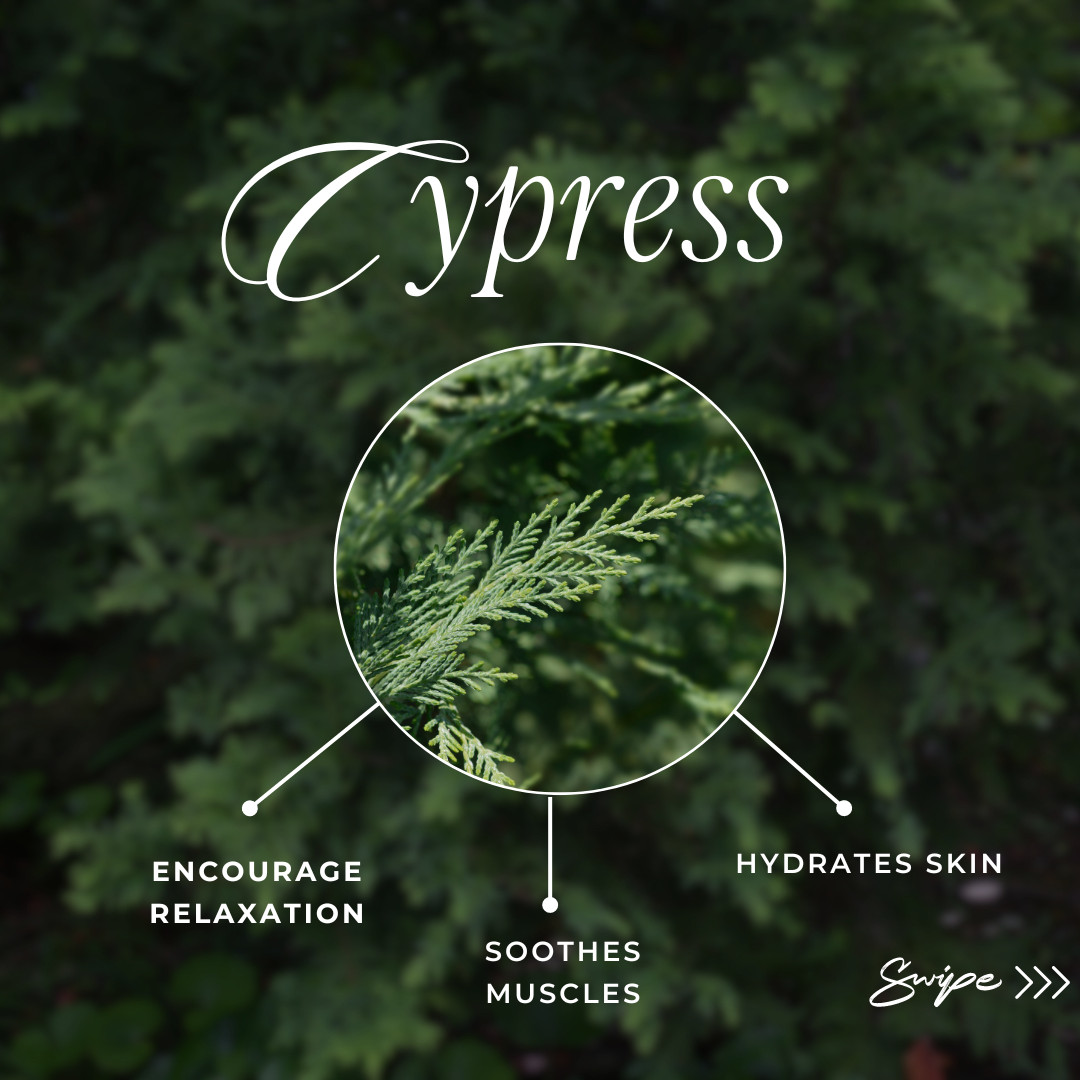
Did you know?
♨️When others distill Cypress for 20 hours, they only get 20 of the 280 properties.
♨️When it is distilled 26 hours you get 0 properties. 🙄
♨️The correct length of time for distilling Cypress is 24 hours, which gives you the full 280 aromatic compounds.
But…
The majority of distillers only distill cypress for 3 1/2 hours, producing a pretty smell, but a really poor oil that can be bought for dirt cheap all over the world on store shelves and online.
Cypress (Cupressus sempervirens) essential oil is steam distilled from the branches of the cypress tree. Its main constituent is alpha-pinene, which has been studied for its many health benefits. YL Cypress is sourced from Spain and Gary worked directly with distillers in the early days of Young Living, to get them to change their distillation practices to produce a higher quality oil.
Cupressus sempervirens is the botanical name for cypress. Sempervirens means “live forever.”
🌲The cypress tree originates in France and Spain, where cypress wood was used by many ancient civilizations. From doors to ships, statues, and even coffins, cypress wood was a favourite. Did you know, the cypress wood doors of Rome’s St. Peter’s Basilica show no sign of decay even after 1,200 years?
🪵 Some cypress trees can live to be over 1,000 years old! The ancient tree has always been known for its strength and durability, which speaks of grounding, security and serenity.
🌲Another watchword associated with Cypress essential oil is ‘stabilising’ which is something we are often in need of.
🩸The main uses of Cypress are in skin care, end-of-day bathing, and as an attractive, unisex scent. Cypress essential oil is also beneficial for oily or troubled skin.
👩🏽 Perfect as: a healthy hair remedy, adding to facial care products and a scent when freshness, acceptance and security are needed.
Much like its evergreen nature, many of cypress’ uses have been long-lived. The Greeks would steep cypress cones in their wine to help treat asthma and coughs while the Egyptians imported oils of cypress from their neighbors in the Mediterranean for use in their body oils.
Many people still use cypress essential oil in home asthma and cough remedies today
In today's fast-paced world, where stress and tension are part of our daily lives, finding natural and effective remedies to alleviate these conditions is more important than ever. Cypress essential oil, a gift from nature, has emerged as a powerful ally in promoting relaxation, easing muscle tension, and supporting respiratory health. Let's dive into the wonders of cypress essential oil and how we can incorporate it into our modern lives for a sense of tranquility and well-being.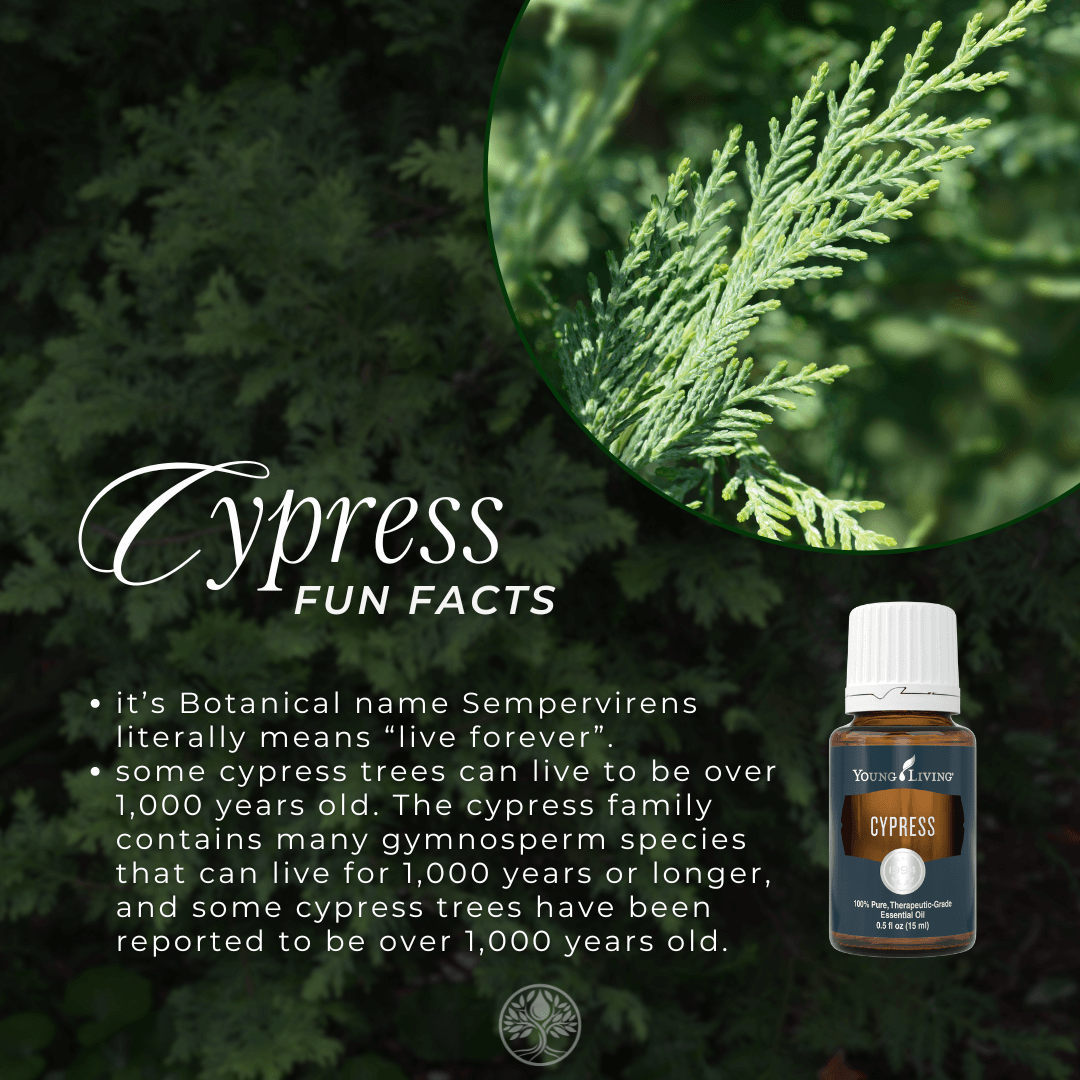

Try Cypress Essential Oil: A Natural Relaxant and Muscle Soother**
For those suffering from tight, sore muscles, cypress essential oil can be a godsend. Its anti-inflammatory properties make it an excellent choice for a soothing massage oil. Simply mix a few drops of cypress oil with a carrier oil, such as coconut or almond oil, and gently massage into the affected areas. This not only helps to relax the muscles but also promotes circulation, aiding in the recovery process.
You may want to support Respiratory Health with Cypress Essential Oil**
Derived from the majestic cypress tree, has been used for centuries for its therapeutic properties. Its fresh, clean aroma is not only invigorating but also has a calming effect on the mind and body. When diffused, cypress oil can help reduce stress and anxiety, creating a peaceful environment that encourages relaxation.
Cypress essential oil is also renowned for its respiratory benefits. Its ability to help clear the airways makes it a valuable tool for those experiencing tightness or respiratory discomfort. Whether you're battling a cold or suffering from allergies, incorporating cypress oil into your routine may provide much-needed relief.
One effective way to harness the respiratory benefits of cypress essential oil is through steam inhalation. Add a few drops of the oil to a bowl of hot water, cover your head with a towel, and breathe in the steam. This method may help to loosen mucus and clear the nasal passages, making breathing easier and more comfortable.
Try Incorporating Cypress Essential Oil into Your Daily Routine**
Embracing the benefits of cypress essential oil in current times is easy and can significantly enhance your quality of life. Whether you choose to diffuse it, apply it topically, or use it in steam inhalation, this versatile oil can help you achieve a state of relaxation, ease muscle discomfort, and support respiratory health.
Remember, when using essential oils, quality matters. Opt for pure, high-quality cypress essential oil from reputable sources to ensure you're getting the most out of its therapeutic properties. With cypress essential oil as part of your wellness toolkit, you can navigate the challenges of modern life with greater ease and vitality.
Want some research to back up what people have known about this powerful oil for hundreds of years? Check out these:
Embrace the natural power of cypress essential oil and discover a more relaxed, healthier you. 🌿✨
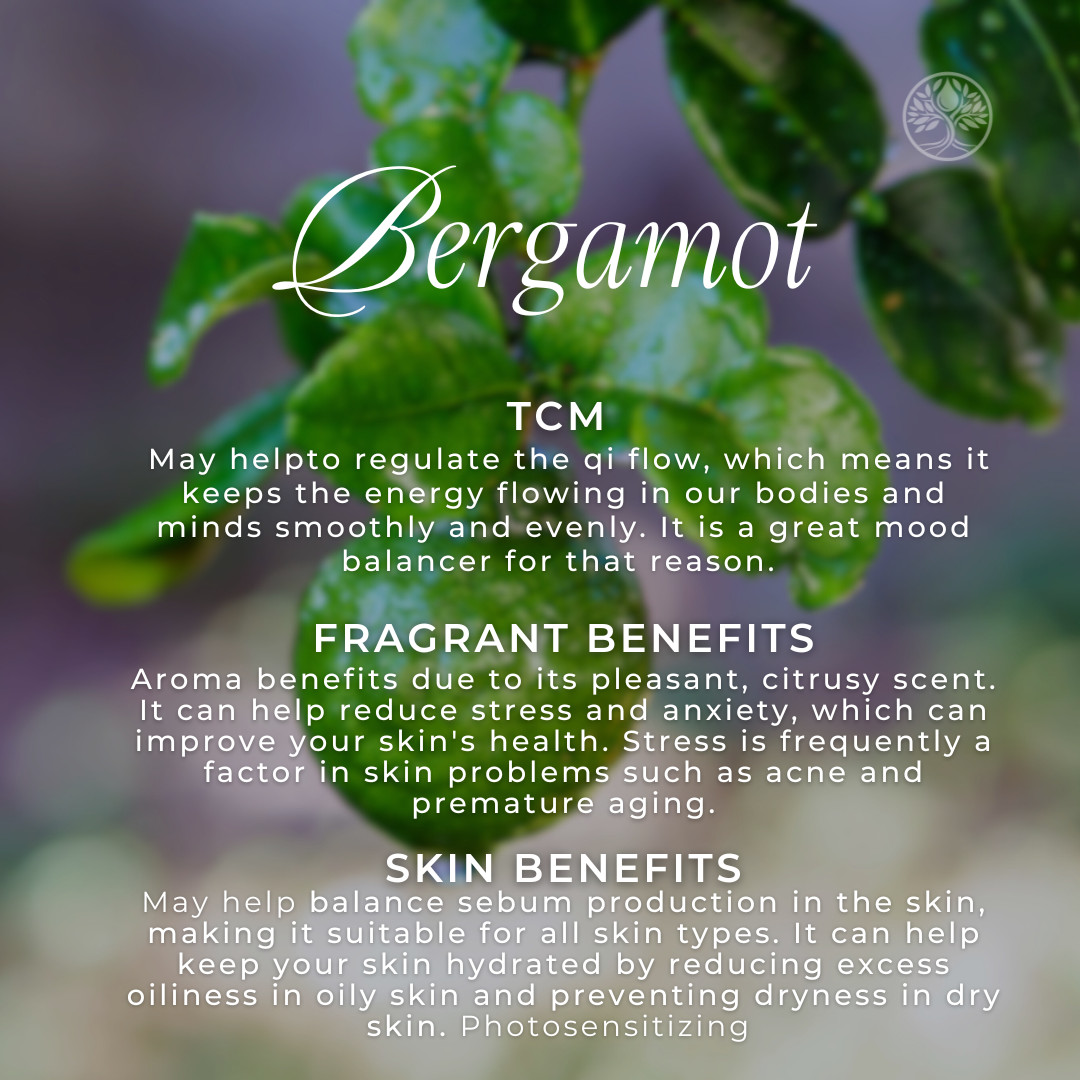
Bergamot Essential Oil
Citrus aurantium bergamia
If you’ve ever enjoyed a cup of Earl Grey tea, you’ve enjoyed the lovely scent and flavor of bergamot. One of the most popular teas in the world, Earl Grey owes its unique fragrance to the oil, which is also used in perfumes and cosmetics.
Extracted from the rind of the bergamot orange (Citrus bergamia), bergamot has a reputation for being calming and soothing, and for helping to heal wounds and sores on the skin. Frequently used in aromatherapy and in massage therapy, it’s said to help reduce sensations of pain, decrease nervous tension, and even help you sleep.
The chemical composition of bergamot essential oil is quite complex and varies depending on factors such as the type of bergamot fruit, the time of harvest, and the extraction method used. The main chemical components of bergamot essential oil include monoterpenes such as limonene, linalool, and alpha-pinene, as well as sesquiterpenes, such as beta-bisabolene and alpha-humulene. These compounds are responsible for the oil's characteristic citrusy, floral, and spicy aroma, as well as its potential health benefits.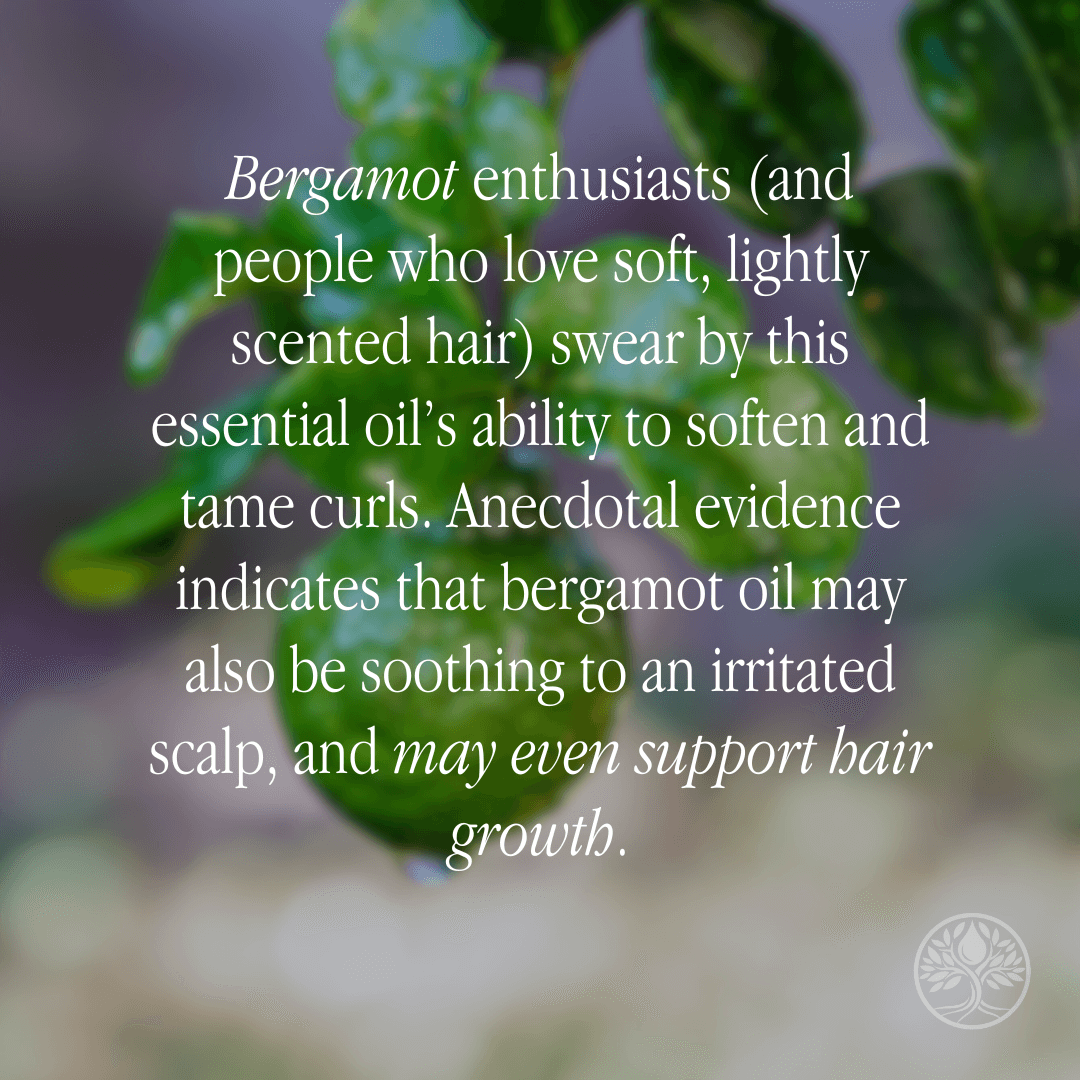

It may be hard to believe that oil from what is essentially an orange could do that, but this is a unique fruit. Though called an orange, it’s not the same as the oranges we’re used to. It’s about the same size, but has a more yellowish color, and is shaped more like a pear. It’s named after a town in Lombardy, Italy — “Bergamum” — and comes from a small evergreen tree that blossoms in the winter.
In addition to being enjoyed as tea, many different cultures used bergamot for medicinal purposes. In traditional Chinese medicine, bergamot oil was used to help the digestive system, relieve muscle pain, rejuvenate skin and prevent bacterial growth (7). In ancient India, Ayurvedic doctors also used bergamot oil to promote skin health and to help the digestive system. The ancient Indians also used bergamot as an antiseptic and antibacterial and would use bergamot oil to help fevers. It is believed that bergamot oil was also used in Ayurvedic medicine to treat psychological disorders such as anxiety and depression (10).
In ancient Persia and Greece, people would burn bergamot in incense burners to help treat respiratory issues (7). After the rise of the Ottoman Empire, the practice of using bergamot to treat respiratory issues was picked up by the Turks as well. The Italians often ingested bergamot juice to get rid of worms, treat malaria and help reduce fevers. Additionally, Italians would use bergamot oil as an antiseptic to treat wounds and prevent infection (8).
In North America, Native American tribes drank tea made of bergamot herb for its beneficial effects and pleasant taste. As tea, they used bergamot to treat mouth or throat infections, gingivitis and gastrointestinal issues. Interestingly, although bergamot herb is entirely different than citrus bergamot, both plants have been used for antiseptic properties (4). Many Native American tribes also recognised that the bergamot herb could be used to treat infections or open wounds, so they would often make a paste using bergamot in order to treat injuries. Along with this, some tribes would use it to keep themselves from getting mouth infections, so bergamot herb was one of the first materials to be used as mouthwash (4).
As you can see, in this kaleidoscope world of essential oils, bergamot is a star that often gets overlooked. It has always been important for its role in perfumery, yet this citrus-scented powerhouse is often overlooked, even for just it’s extensive array of benefits to the skin. Make this a staple in your skincare formulas, and value it not just for its vibrant aroma, but for its remarkable ability to beautify and protect the skin.
From stimulating cell renewal to fostering a healthy glow, bergamot oil is packed with compounds that can have a profound impact on skin health and other body systems, so make sure to have a few bottles on hand!
This is a citrus essential oil, so remember that this oil may cause photo-sensitivity. Avoid direct sunlight or UV rays for up to 12 hours after applying product topically. Does not cause photosensitivity when taken internally.
Want a little deeper dive into Bergamot? Check out this article:
Click to Purchase here
Looking for more?? Checkout these sources!
Research:
https://www.ejgm.co.uk/download/investigation-of-anti-inflammatory-activity-of-bergamot-oil-6622.pdf


